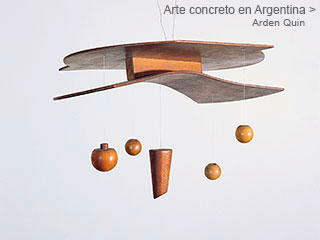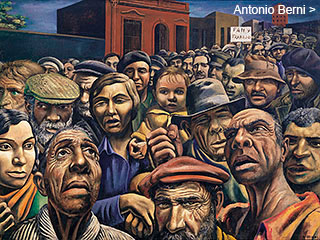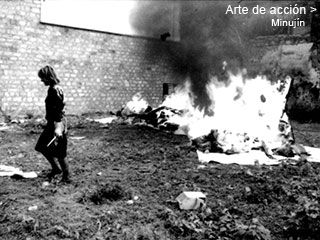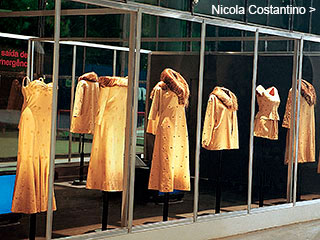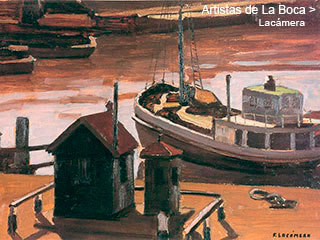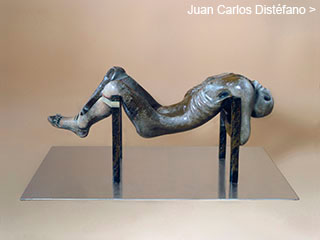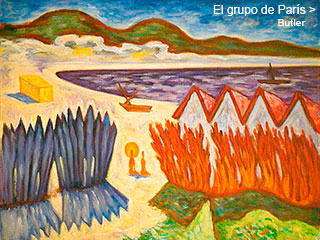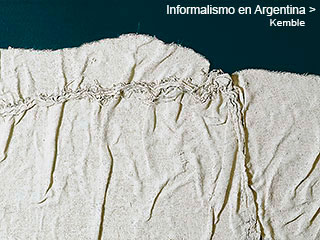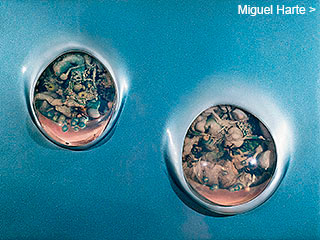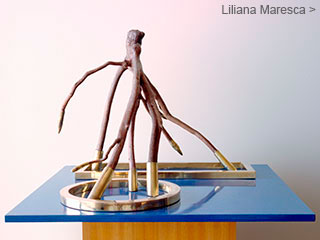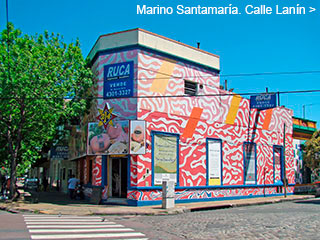Menú
Algunos dossiers
Informalism
in Argentina
in Argentina
by
Jorge López Anaya
August 2003
August 2003
Argentine Informalism incorporated processes which went against the “good taste” of the local practices. Based on the existential poetry of the time, through spontaneous gestures and the use of discarded material, it violated the limits of the traditional artistic genre and opened the road to the concept of the object, the installations and the art of action.
Greco
and a loud black hat full of multi-colored feathers standing out. He climbed on to a small stage, and from there he handed out carnations and flags with the face of Palito Ortega. Afterwards, with his hoarse voice trembling, he read his manifest which gathered more than one hundred obscenities and swear words. Fed up with the closed quarters, Greco’s group decided to move to Plaza San Martín, to the rhythm of the San Lorenzo March: the dancer Gades rehearsed a fandanguillo at the foot of the monument, while Greco played around with some paints over a white canvas. At this moment, in an augur pose, he explained to the public what vivo-dito meant. ‘It is what can be pointed out with a finger, what can be shown, what takes place’”.
He later traveled to New York, before the end of the year. As it seems, in this occasion he met with Marcel Duchamp. In this opportunity he also performed an “action” known as the Vivo Dito Raffle at Central Station. Christo remembered the event at an interview held in Barcelona in 1991:
“Yes, it was sort of a raffle...He placed a few art pieces inside some lockers, eighty or so. He sold the keys of the lockers and when you opened them, you found something. But not everyone found a piece of art. I remember that the keys had been sold at the Chelsea Hotel, which is not too far from Central Station... I remember that Alan Kaprow was there, Robert Brown was there as well...”.


